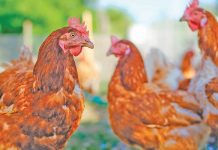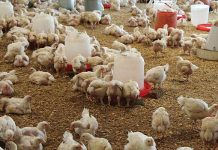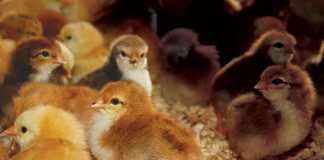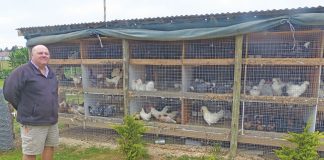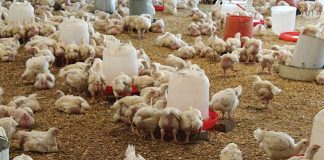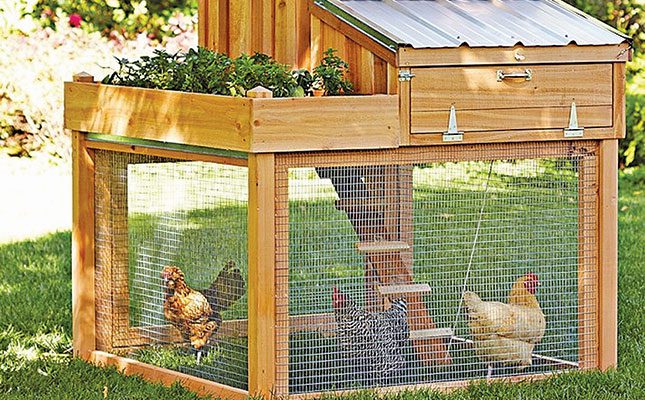
Photo: Flickr
While some may believe that ‘animal welfare’ and commercial livestock production are terms that cannot co-exist, the truth is that most farmers are arguably more committed to animal welfare than the most passionate animal activist is.
This is because farmers are deeply invested in their farming businesses, and animals that are under stress due to poor handling, lack of food or water, injury or illness are bound to be less productive.
Most farmers also appreciate their animals for the function they perform as part of the farming operation, and so are also deeply invested in the welfare of their animals.
Animal welfare refers to the physical, mental, and emotional well-being of animals. It encompasses a range of factors, including adequate nutrition, shelter, and medical care, as well as the ability to engage in natural behaviour, experience minimal stress and pain, and live in safe and comfortable conditions.
For farmers, ensuring the welfare of their animals is not only an ethical obligation, but also a key aspect of good animal husbandry and profitable agriculture. By providing their animals with optimal living conditions, farmers can help prevent disease, reduce stress and injury, and improve growth and productivity.
Moreover, consumers are increasingly concerned about the welfare of animals raised for food and other agricultural purposes. Many consumers want to know that the products they are buying come from farms that prioritise animal welfare, and are willing to pay a premium for them.
By demonstrating a commitment to animal welfare, farmers can not only meet consumer demands but also enhance their reputation and build customer loyalty.
In addition to these benefits, ensuring the welfare of farm animals is also important for regulatory compliance. Many countries have laws and regulations that govern the treatment of animals in agriculture, and farmers who fail to meet these standards may face fines, legal action, or loss of their licence to operate.
Chicken welfare
In chicken production, in particular, stress can lead to reduced growth rate, low feed efficiency, an impaired immune system, changes in intestinal microflora, and deterioration of meat quality. Maintaining good chicken health is therefore critical for profitable production, for several reasons:
Reduced mortality
Healthy chickens are less likely to become sick and die, which reduces mortality rates and helps to ensure that more birds reach market weight. This can significantly affect the profitability of a poultry operation, as each bird represents a potential source of revenue.
Improved feed conversion
Healthy chickens are able to convert feed into body weight more efficiently, which can improve feed conversion ratios and reduce overall feed costs. This is important because feed is typically the largest expense in a poultry operation.
Better growth rates
Healthy chickens are able to grow at a faster rate, which means they reach market weight more quickly. This can reduce the time and resources required to raise each bird, and increase the number of birds that can be produced in a given time period.
Improved product quality
Healthy chickens are less likely to have defects or health issues that could reduce the quality of their meat or eggs. This is important, as consumers expect high-quality products, and poor quality can affect sales and revenue.
Reduced disease transmission
Maintaining good chicken health can help to reduce the risk of disease transmission within a flock. This can prevent disease outbreaks that could affect the health and productivity of the entire flock, and reduce the need for expensive veterinary treatments.
Welfare guidelines in South Africa
According to the South African Poultry Association (SAPA), the guidelines it has developed to ensure animal welfare in chicken production in the country cover a range of aspects, including housing, feeding, and health management.
Chickens need to be kept in facilities that provide adequate space, ventilation and lighting. The guidelines specify minimum space requirements per bird, and recommend providing perches and other forms of environmental enrichment to promote natural behaviour.
According to SAPA, the space guidelines are as follows:
- Day-old chicks: four chicks/0,1m2;
- Up to four weeks old: three chicks/0,1m2;
- Four to eight weeks old: five to six birds/ 0,1m2;
- Over eight weeks old: three to four birds/0,1m2.
In terms of feeding, chickens should receive a balanced and nutritious diet that meets their nutritional requirements. Feed should be provided in a manner that promotes good health and minimises stress.
Health management
Chickens should be managed in a way that minimises the risk of disease and injury. This includes regular monitoring for signs of disease or stress, and prompt treatment when necessary. Vaccinations should be used where appropriate to prevent the spread of disease.
For handling and transport, chickens should be handled and transported in a way that minimises stress and avoids injury. The guidelines recommend providing training to staff on humane handling techniques, and ensuring that transport vehicles are designed to minimise stress and provide adequate ventilation and temperature control.
Chickens must be slaughtered in a humane and efficient manner that minimises stress and pain.
Signs of a healthy and happy chicken
Part of ensuring animal welfare is the effective and timely management of disease. In this
regard, it is important that farmers identify chickens that appear unhealthy or listless. This requires careful and frequent monitoring of the birds. For example, a healthy chicken will have bright and alert eyes. A chicken with cloudy or dull eyes may be ill, and so further investigation will be required.
Healthy chickens also generally have clean, shiny feathers, free from mites and lice. If a chicken has dull or discoloured feathers, it may be sick. A healthy, happy bird is also active and alert, and has a good appetite. Chickens that are lethargic could be sick or stressed.
A healthy chicken should have a clean vent area, free from faecal matter or other signs of infection. A healthy chicken will also have a healthy body weight for its breed and age. Chickens that are too thin or overweight may be ill or may not be receiving adequate nutrition.
A healthy chicken will also breathe easily, with no signs of wheezing or coughing.
Farmers can also determine the health of their birds by examining their droppings. A healthy chicken will excrete firm, well-formed droppings; in contrast, an unhealthy bird may excrete runny or smelly droppings. Any abnormality in droppings is an indication of illness.




